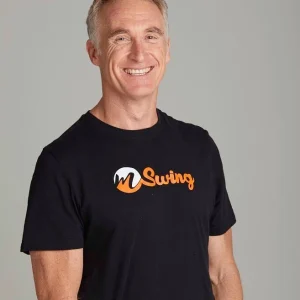TRAINING
Neural Mobilisation For Exercise Instructors: Improving Client Mobility

Exercise instructors routinely perform targeted stretching and mobility work with their clients, and a good program can improve mobility in muscles, joints and connective tissue. Many types of mobility techniques are available to instructors, with static stretching and dynamic stretching being the most common. The type of stretching used in a class or PT situation is determined by the style of class, the nature of the participants and the skill and judgment of the instructor.
Here’s how neural mobilisation techniques can enhance client mobility.
Neural mobilisation
Neural mobilisation techniques have been used for many years by physiotherapists and other allied health professionals to assist in restoring normal mechanics and optimising function in their clients. Neural mobilisation:
Improves the tensile environment of a nerve to provide less restricted movement.
Increases the available range of motion by allowing the neural tissue to accommodate to the range intended prior to overload taking place.
Is similar to dynamic stretching in that it involves movement.
The nervous system
The nervous system is a mobile beast. The nervous system continually moves relative to tendons, muscles, bones, inter-vertebral discs, viscera, fascia and blood vessels. For the nervous system to be able to accommodate movement it needs to be able to deal with:
tension
slide
compression
Tension
Due to nerve being attached along its course, neural tissue is subject to tension. The perineurium is dense fascial tissue that helps the nerve to withstand tension. A nerve can withstand 18 to 22% strain before it fails.
There is a degree of movement available at either end of a nerve and also along its course. If tension is created in one spot the nerve slides toward this area to provide slack and equalise tension. Up to the point that the slack is taken up the nerve remains under low tension.
Movement of a single joint does not evoke much tension. Large increases in tension occur however, when several joints move causing the slack to get taken up over the entire course of the nerve. Movements that increase the distance between two end points of the nervous system will increase neural tension.
Phases of a neural tensile event that occur during movement
Taking up the slack
Rapid sliding
Full capacity with large increases in tension
Neural ischemia
Lack of blood flow is called “ischemia”. Neural ischemia has been shown to cause inflammation within nervous tissue. This can lead to neural symptoms even in normal subjects in as little as ten seconds. If the nerve were not capable of sliding, neural ischemia would happen often.
Visco-elasticity
The nervous system is visco-elastic. Nervous tissue initially behaves in an elastic manner when strong tension is placed on it. In other words when the tension is decreased the nerve goes back to normal. As the duration of held tension increases though, the nervous tissue deforms and becomes more fluid-like and intra-neural ischemia increases.
Effect of spinal position on neural tension
Spinal movement effect on lower limb tension
Spinal flexion increases neural tension
Spinal extension decreases neural tension
Spinal movement effect on upper limb tension
Scapula depression increases neural tension
Scapula elevation decreases neural tension
Cervical side flexion – increases neural tension contra-laterally and decreases neural tension ipsi-laterally
Recommendations for fitness professionals
Fitness professionals have good scope to be able to implement neural mobilisation techniques. The use of mid-range neural mobilisation techniques can effectively prepare an area for movement and also restore range of motion once a workout
has finished.
The safe range to work within is the neural sliding zone
Exercise Instructors should perform techniques as movement.
Mobilisation speed should be slow (i.e., four to five seconds from start to finish).
Sustained, end-of-range neural tension positions are considered unsafe as they can compromise client safety whether neural symptoms are present or not. These positions should be avoided by exercise instructors. ®

DOWNLOAD THIS ARTICLE PDF HERE
- Neural Mobilisation For Exercise Instructors: Improving Client Mobility

MARK DAVIS
Mark Davis is a physiotherapist with an extensive background in gym-based rehabilitation and over 30 years’ experience in the fitness industry. A former master coach with the Australian Institute of Fitness, Mark has been involved with the preparation of thousands of fitness professionals. Mark is also the co-founder of mSwing, which was developed to make fun and effective movement experience accessible to as many different people as possible. To learn more visit mariettamehanni.com/education